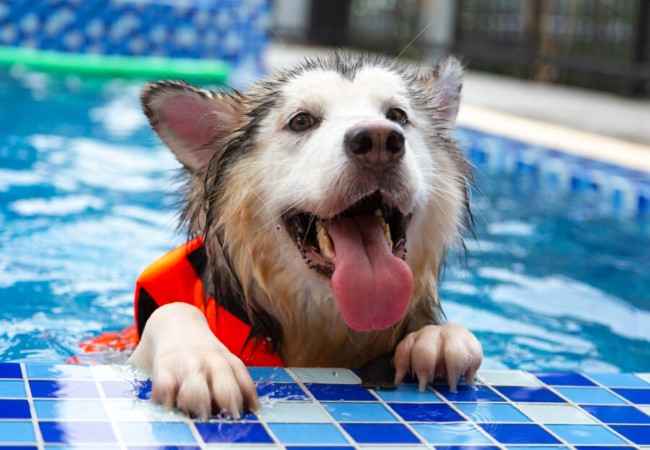Vet Guide 2025 Pool Safety Tips for Dogs 🐶🩺

In this article
Vet Guide 2025 Pool Safety Tips for Dogs 🐶🩺
By Dr. Duncan Houston BVSc
Pool time can be a joyful way for your dog to cool off—but without proper precautions, it can also be risky. I’m Dr Duncan Houston BVSc, and in this all-inclusive guide, you’ll find expert advice on how to make your pool dog-safe—from barriers and swim lessons to ear care, chemical exposure, and summer skin protection. With tele-health help from Ask A Vet, you can dive into a safer, happier summer together! ☀️
1. Start with Safe Access & Supervision
- 🔒 Pool fencing or cover—install perimeter fencing or a solid pool cover to block unsupervised access.
- 🧯 Never leave unsupervised—always watch pets when poolside, even if they’re strong swimmers.
- 🚨 Use pool alarms to alert you immediately if your dog falls in.
2. Teach Pool Entry & Exit
- 🐕🦺 Swim training—show your dog how to swim safely; use shallow steps, then deeper water training.
- 🪜 Use ramps or wide steps to make exits easy—ladders won’t work for dogs.
- 🎯 Practice regularly to build confidence and prevent panic.
3. Use Life Jackets for Safety
- 🧥 Life jackets recommended for all dogs, especially seniors, puppies, flat-faced or short-legged breeds.
- ✔️ Look for bright colors, handles, and a secure fit—a two-finger check is ideal.
4. Prevent Chemical & Water Risks
- 🚰 Provide fresh water poolside to discourage drinking chlorinated pool water.
- 🚫 Store pool chemicals securely—chlorine tablets and liquids can cause burns or GI upset.
- 🛁 Rinse after swim to protect coat and skin from irritation—use mild cleanser or conditioner.
5. Watch for Fatigue & Health Issues
- 😓 Supervise swim time; small signs of fatigue—sinking hips, slower strokes—require rest immediately.
- ⚠️ Report panting, diarrhea, vomiting, or lethargy after swimming to Ask A Vet for quick advice.
6. Protect Ears, Skin & Paws
- 👂 Dry ears thoroughly post-swim to prevent infections, especially in floppy-eared breeds.
7. Enrichment & Bonding Activities
- 🧸 Offer Woopf floating toys or Purrz slow-flow water toys to keep play safe and stimulating.
8. Emergency & Health Monitoring
- 📱 Use Ask A Vet for tele-advice after incidents like heavy chlorine exposure or hesitant swimming.
- 🩺 Learn pet CPR in case of near-drowning events and keep emergency contacts updated.
9. Sample Safety Checklist
| Step | Action |
|---|---|
| Before swim | Secure fence & locks |
| Entry training | Show steps, life jacket on |
| During swim | Supervise, offer breaks, fresh water |
| After swim | Rinse, dry ears & paws, check skin |
| Health check | Monitor symptoms—call Ask A Vet if needed |
10. FAQs
- Can my dog drink pool water?
- A little won’t harm them, but too much can cause upset or bloat—offer fresh water and monitor.
- Is chlorine bad for my dog's fur?
- It can dry skin and affect coat color—always rinse and apply conditioner or moisturizer afterwards.
- My dog won't get in—force them?
- No—use ramps, life vests, and positive reinforcement. Forcing may cause fear.
- Do I need a life jacket?
- Yes—especially for non-swimmers, cane breeds, senior dogs, and deep water outings.
Conclusion 💡
With thoughtful setup, swimming lessons, life jackets, chemical care, ear & skin protection, and joyful bonding activities, pool time can be a safe adventure for your dog. expert support via Ask A Vet, you’ll both enjoy a splash-filled, worry-free summer. Stay safe and dive in together! 🐕❤️






